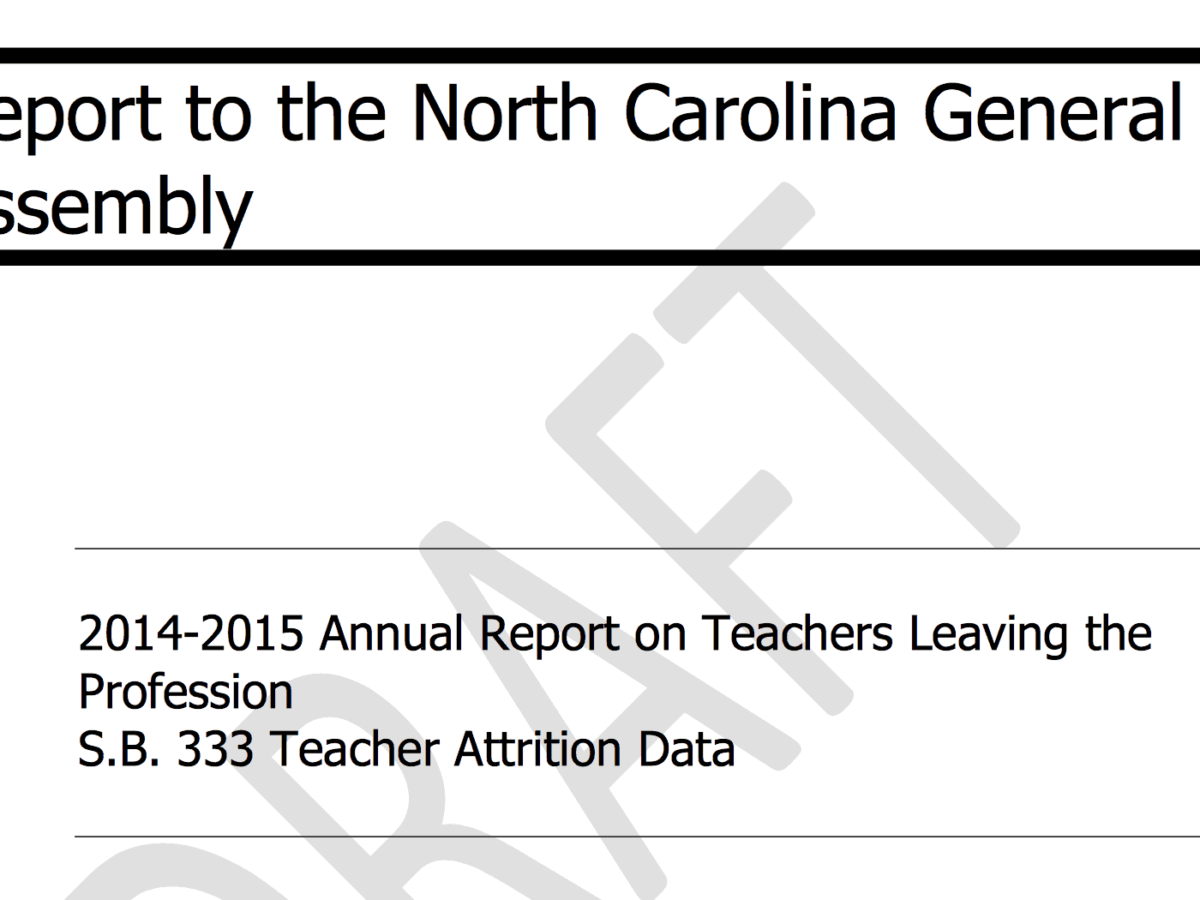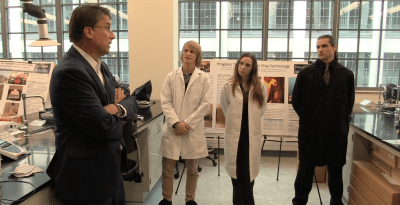
Teacher turnover rates were up slightly in the 2014-15 school year when compared to the previous year, according to a report presented today to the State Board of Education.
Though the one-year increase was slight, the long-term trend is troubling, according to State Superintendent June Atkinson.
“In the past five years, the state’s teacher turnover rate has increased in all but one year (2013-14),” she said in a press release. “We won’t reverse this trend until we address the root causes of why teachers leave the classroom.”
The report shows generally that the state turnover rate for 2014-15 was 14.84 percent, up from 14.12 percent the previous year. That amounts to 14,255 teachers out of the 96,081 teachers working in schools during 2014-15. The state turnover rate in 2010-11 was 11.17 percent.
A deeper look at the reasons for turnover among teachers gives some indication of the drivers sending teachers out of their schools, districts, or the profession as a whole.
The largest single category of attrition was teachers who left for personal reasons: 5,681. Included in this group are those who left because of family responsibilities, to relocate their families, to continue their education, or because of health or disability-related issues. Also in this group are those teachers who left because they are “dissatisfied with teaching” or changed careers — 1,209 — and those who took teaching jobs in other states: 1,028.
The second largest attrition group were those teachers who left their current positions but remained in education: 4,492. Of those, 258 left to teach at a charter school, and 211 left to teach at a “non-public/private school.”
Only 982 teachers left their positions at the behest of their school districts. Only 17 were straight out dismissed, while the most — 640 — were not rehired after their interim contracts ended.
Reductions in force — usually associated with budgetary constraints — only accounted for 13 teachers leaving their positions in 2014-15.
As Superintendent Atkinson alluded to, the trends for turnover have been fairly consistent in the past five years.
One of the biggest increases over the past five years has been in those teachers leaving for personal reasons. In the 2010-11 school year, 1,539 teachers left their positions for personal reasons. Contrast that with 2014-15, when 5,681 did so.
When it comes to district turnover, Northampton County Schools has the highest rate, 33.55 percent, with 52 teachers leaving out of the 155-teacher workforce. Two neighboring counties — Bertie and Halifax — both made the top five for worst turnover rates. Bertie is number three with 30.81 percent, and Halifax is number five with 29.96 percent.
Graham Schools had the best teacher turnover rate: 5.75 percent. It lost only 5 of its 87 teachers.
“The State Board of Education and Department of Public Instruction have a number of initiatives in place to help recruit and retain teachers including alternative entry licensure routes, beginning teacher support programs, 12 percent pay increase for National Board Certification and Troops to Teachers,” a press release stated.
At the State Board of Education meeting, members also heard about the success of North Carolina third graders.
Seventy-six percent met reading proficiency standards in 2014-15, down from 79 percent in 2013-14.
“By looking at schools that have successfully increased third grade reading proficiency, we found that many of them use similar intervention strategies. It’s important that we communicate what is working in these schools so that all our third graders can experience success,” Atkinson said in a press release.
DPI looked at those districts that showed good third-grade proficiency, and came up with a number of factors that contribute to success for this student group. These factors include intervention and tutoring outside of normal reading times, small group and individual instruction, and focus on foundational reading skills.


